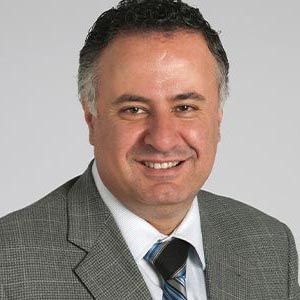Article
Understanding the Precursors of Neurological Brain Diseases and Catching up With Heart Disease
Author(s):
Imad Najm, MD, provided commentary on the long-term efforts needed to understand the origins of neurological brain diseases and his desire to copy the success of the cardiovascular field.
Imad Najm, MD

This is a 2-part interview. For part 1, click here.
For years, clinicians have dreamt of preventing neurological brain diseases before they occur. Research has uncovered bits about the pathology of these diseases, but the reasons why some do and others do not develop them remains a mystery. A newly announced initiative called the Cleveland Clinic Brain Study, will collect data from up to 200,000 neurologically healthy individuals over a 20-year period to identify biomarkers and targets for preventing and curing neurological disorders.1
Imad Najm, MD, one of the coinvestigators of the project, believes that if successful, the study could have lasting effects on the field similar to that of the notorious cardiovascular Framingham Heart study. That landmark study assembled dense and complex data from thousands of individuals over a 50-year stretch, with findings on cardiovascular risks that remain significantly prevalent today.2 Najm, director of Cleveland Clinic’s Epilepsy Center, wants to see the state of brain disease care “catch up” with where the state of heart disease care is today, noting that this study has the potential to help achieve that.
In part 2 of an interview with NeurologyLive®, Najm discussed the driving force behind the study, the need to observe the silent phase before the onset of neurological disease, and what specific data he’ll be most interested in. He also commented on the long-term effects the results may have, including its impact on future screening and research.
NeurologyLive®:Is there a reason to test patients for neurological disease even earlier than what is currently done?
Imad Najm, MD: Yes, I think this is one of the most important goals that we’re looking at in the study. That is, to find out what are the targets we need to look for in the phase that precedes the clinical phase. For those of us who are at risk in general. Any person over 50 years old may be considered at-risk for the occurrence of Alzheimer disease, Parkinson disease, stroke, epilepsy, and other neurodegenerative disorders. But we don’t know how to screen for these risks.
Let’s compare this to what happened in the 1940s and 1950s. We used to see individuals in their 40s suddenly drop dead from a heart attack. Nobody knew why this was happening, but even more importantly, what can we screen for to say, "Well, this person is at higher risk." And these targets or approaches we need to take to mitigate these risks and prevent cardiovascular disorders from happening. This was the first time a study, maybe similar to what we’re doing, looked at the precursors and risk factors that we don’t know. This was the Framingham study, which looked over 30, 40, 50, and 60 years of risk factors. Everything we know about risk factors for coronary artery diseases and heart diseases such as high cholesterol, high blood pressure, diabetes, high obesity, were all recognized because of this study, which is the same type of design we have now.
We are trying to do the same type of study but with the technology of the 2020s. We are looking at clinical biomarkers, but much more sophisticated biomarkers that will include genetic, genomic, molecular microbiome myoma biomarkers. And then looking for biomarkers based on imaging such as high-resolution MRIs, scans for the retina, as well as look at neurophysiological biomarkers with post processing, using signal processing analysis that looks for things that clinicians would not know.
Our main goal here is to hopefully find good biomarkers in the blood, body, and in MRI, that will tell us, “Hey, the risk is very high for a disease.” And then maybe some of them we hope, could be the target for our intervention. Our end goal is to make sure that the brain will keep up with the heart. Over the last 16 years, we’ve kept this pump beating in a healthier way, healthier than it’s ever been over the last 100 years. But we’re now discovering that the brain is not able to keep up with the heart after the age of 50, 60, 70, 80, and 90. Our goal is to make sure the pump is pumping, and the brain is functioning to a satisfaction of every one of us with our cognitive and motor abilities to enjoy our later stages of life with our loved ones.
Is there anything else you’d like to mention?
This type of study, we hope, will be the precursor of many studies later on, that will use some of the data we’ve collected for the purpose of recognizing the risk factors for neurodegenerative disorders. As the community at large, to find ways to target these devastating and crippling disorders, to try to prevent them from happening, and to improve the quality of life for humans of multiple generations in the future.
Transcript was edited for clarity.




